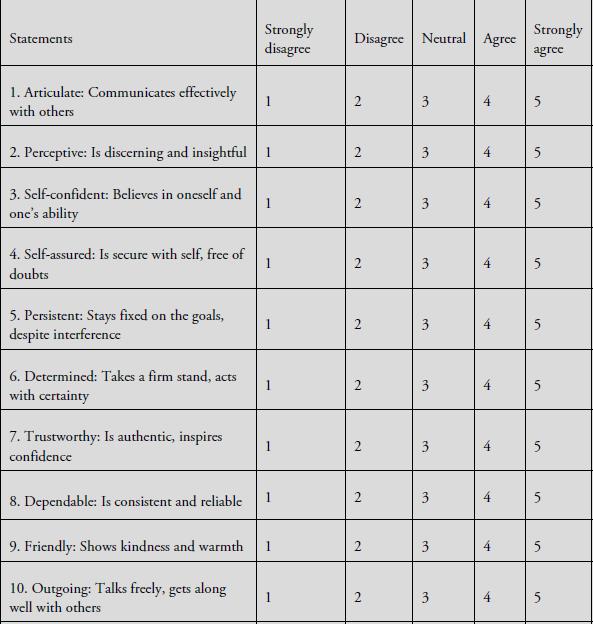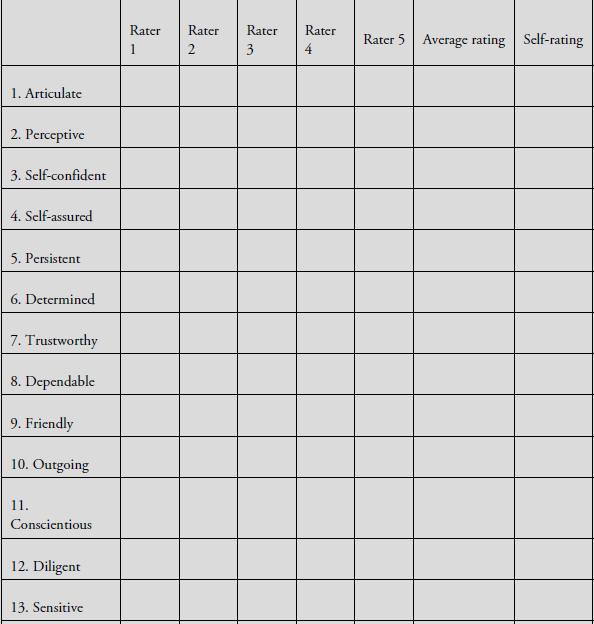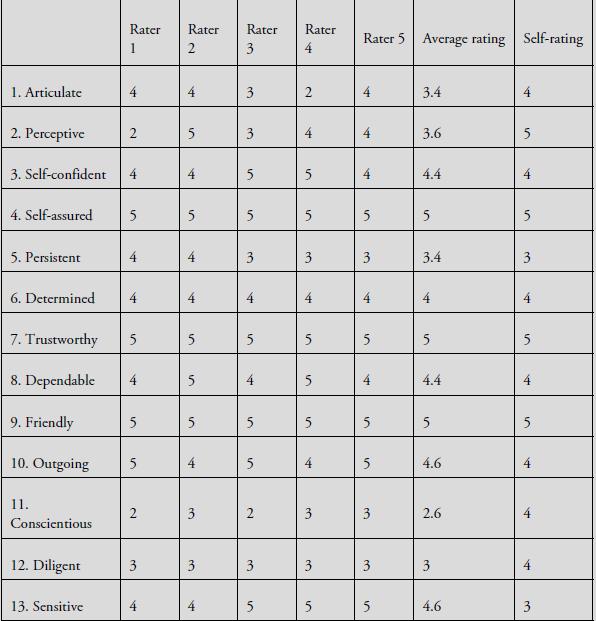Purpose 1. To gain an understanding of how traits are used in leadership assessment 2. To obtain
Question:
Purpose
1. To gain an understanding of how traits are used in leadership assessment
2. To obtain an assessment of your own leadership traits
Directions
1. Make five copies of this questionnaire. It should be completed by you and five people you know (e.g., roommates, coworkers, relatives, friends).
2. Using the following scale, have each individual indicate the degree to which he or she agrees or disagrees with each of the 14 statements below regarding your leadership traits. Do not forget to complete this exercise for yourself.
3. ______________________________ (your name) is


Scoring
1. Enter the responses for Raters 1, 2, 3, 4, and 5 in the appropriate columns on the scoring sheet on this page. An example of a completed chart is provided on page 41.
2. For each of the 14 items, compute the average for the five raters and place that number in the “average rating” column.
3. Place your own scores in the “self-rating” column.
Leadership Traits Questionnaire Chart

Scoring Interpretation
The scores you received on this questionnaire provide information about how you see yourself and how others see you as a leader. The chart allows you to see where your perceptions are the same as those of others and where they differ. There are no “perfect” scores for this questionnaire. The purpose of the instrument is to provide a way to assess your strengths and weaknesses and to evaluate areas where your perceptions are similar to or different from those of others. While it is confirming when others see you in the same way as you see yourself, it is also beneficial to know when they see you differently. This assessment can help you understand your assets as well as areas in which you may seek to improve.
Example 2.1 Leadership Traits Questionnaire Ratings
![]()
Summary and interpretation: The scorer’s self-ratings are higher than the average ratings of others on articulate, perceptive, conscientious, and diligent. The scorer’s self-ratings are lower than the average ratings of others on self-confident, persistent, dependable, outgoing, sensitive, and empathic. The scorer’s self-ratings on self-assured, determined, trustworthy, and friendly are the same as the average ratings of others. If you have the interactive eBook version of this text, log in to access the interactive leadership assessment.
After completing this chapter’s questionnaire, you will receive individualized feedback and practical suggestions for further strengthening your leadership based on your responses in this questionnaire.
Step by Step Answer:

Introduction To Leadership Concepts And Practice
ISBN: 9781506330082
4th Edition
Authors: Peter G. Northouse





